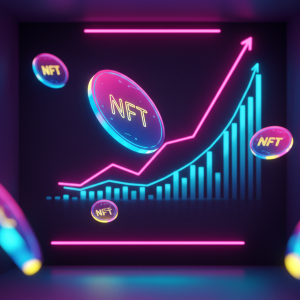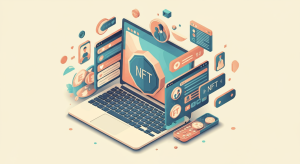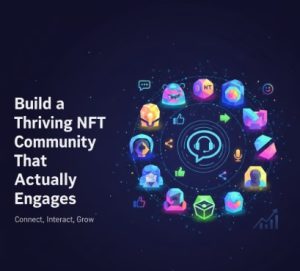How to Build NFT Communities That Actually Engage (And Buy)

The NFT space moves at lightning speed. Projects launch daily, Discord servers multiply, and Twitter spaces buzz with activity. Yet most NFT ventures struggle with the same challenge: building genuine community engagement that translates into meaningful relationships and sustainable sales.
Creating an NFT community isn’t just about gathering followers—it’s about fostering authentic connections between collectors, creators, and enthusiasts who share common interests. Successful NFT projects understand that community engagement directly impacts floor prices, secondary sales, and long-term project viability.
Understanding Your NFT Community Landscape

Before diving into engagement tactics, you need to understand who you’re trying to reach. NFT communities typically include several distinct groups: collectors seeking investment opportunities, artists interested in creative expression, gamers looking for utility-based assets, and speculators focused on quick profits. For a deeper dive into leveraging NFTs in marketing, check out this NFTs in Digital Marketing: Complete Guide.
Each group has different motivations and communication preferences. Collectors value rarity metrics and market analysis. Artists appreciate behind-the-scenes content and creative processes. Gamers want functional utility and roadmap updates. Speculators need price action data and trading insights.
Successful NFT projects identify their primary audience early and tailor their community-building efforts accordingly. This doesn’t mean excluding other groups—it means understanding which audience drives your core value proposition.
Choosing the Right Platforms for NFT Community Building
Discord remains the dominant platform for NFT communities, offering robust moderation tools, voice channels for real-time discussions, and integration capabilities with other NFT tools. Most serious collectors expect projects to maintain active Discord servers with clear channel organization and responsive moderation.
Twitter serves as the public face of your NFT project. It’s where announcements are spread, partnerships are announced, and community members showcase their collections. Twitter Spaces provides opportunities for live discussions and Q&A sessions with project founders.
Telegram offers more intimate group discussions and faster communication speeds. Many NFT communities use Telegram for time-sensitive announcements, trading discussions, and smaller group interactions.
Instagram and TikTok work well for visual-heavy content and reaching younger demographics. These platforms excel at showcasing artwork, sharing creator stories, and building brand awareness beyond traditional NFT circles.
Creating Compelling Content That Drives Engagement
Content strategy makes or breaks NFT community engagement. Successful projects balance educational content, entertainment, and community spotlights to keep members active and invested.
Educational content includes market analysis, blockchain explanations, and collecting guides. This positions your project as a valuable resource while attracting serious collectors who appreciate informed perspectives.
Behind-the-scenes content humanizes your project. Share artist workspace photos, design process videos, and founder interviews. Community members connect more deeply with projects when they understand the people and processes behind the art.
User-generated content campaigns encourage community members to create their own content featuring your NFTs. Profile picture contests, fan art competitions, and collection showcase threads generate organic engagement while expanding your reach.
Building Authentic Relationships Through Direct Interaction
Automated responses and generic messages kill community engagement faster than anything else. NFT collectors can spot inauthentic interactions immediately, and they’ll abandon communities that feel robotic or purely commercial.
Founders and team members need to participate actively in community discussions. Respond to individual questions, acknowledge community member contributions, and share personal insights about the project’s development. This direct interaction builds trust and loyalty that survives market downturns.
Host regular community events like virtual gallery walks, creator Q&A sessions, and collector spotlights. These events create opportunities for deeper conversations and help community members connect with each other, not just with the project team.
Implementing Utility and Rewards Programs
Modern NFT communities expect utility beyond simple ownership. Successful projects provide tangible benefits that justify holding their assets long-term.
Exclusive access programs work well for building engagement. Offer NFT holders early access to new drops, private Discord channels, virtual events, or merchandise discounts. These perks create clear value for community membership.
Staking and rewards programs encourage long-term holding while providing ongoing engagement opportunities. Community members who stake their NFTs for rewards stay more active in project discussions and feel more invested in long-term success.
Collaborative creation opportunities let community members influence project direction. Allow NFT holders to vote on future artwork themes, suggest roadmap additions, or participate in collaborative art pieces. This involvement creates stronger emotional connections to the project.
Measuring and Optimizing Community Engagement
Tracking engagement metrics helps you understand what’s working and what needs improvement. Monitor Discord activity levels, Twitter engagement rates, and community member retention over time.
Qualitative feedback often matters more than raw numbers. Pay attention to conversation tone, community member sentiment, and the types of discussions happening organically. Healthy communities generate positive, supportive interactions between members.
Regular community surveys provide direct feedback on what members value most. Ask about preferred content types, event formats, and utility offerings. This input helps you allocate resources toward activities that genuinely improve the community experience.
Navigating Common NFT Community Challenges

Market volatility tests every NFT community. Floor prices fluctuate, trading volume varies, and community mood shifts with market conditions. Successful projects maintain engagement during both bull and bear markets by focusing on long-term value rather than short-term price action.
Scams and security threats plague the NFT space. Establish clear security guidelines for your community, educate members about common scams, and maintain vigilant moderation. Community trust disappears quickly when members feel unsafe.
Scaling challenges emerge as communities grow. What works for 100 members might not work for 10,000. Plan for growth by developing clear moderation systems, community guidelines, and management structures that can handle increased activity levels.
Next Steps for Building Your NFT Community
Building an engaged NFT community requires consistent effort, authentic interactions, and clear value propositions. Start by defining your target audience and selecting appropriate platforms for community building. Focus on creating valuable content and fostering genuine relationships rather than chasing vanity metrics.
Remember that sustainable NFT communities develop over months and years, not days or weeks. Invest in long-term relationship building, provide consistent value to your members, and adapt your strategies based on community feedback and changing market conditions.
The most successful NFT projects treat community building as an ongoing process rather than a marketing tactic. By prioritizing authentic engagement and member value, you’ll create a community that supports your project through market cycles and contributes to lasting success.
Meta data
Meta title
Meta description
Learn proven strategies for building engaged NFT communities. Discover platform tactics, content strategies, and engagement methods that drive sales.





